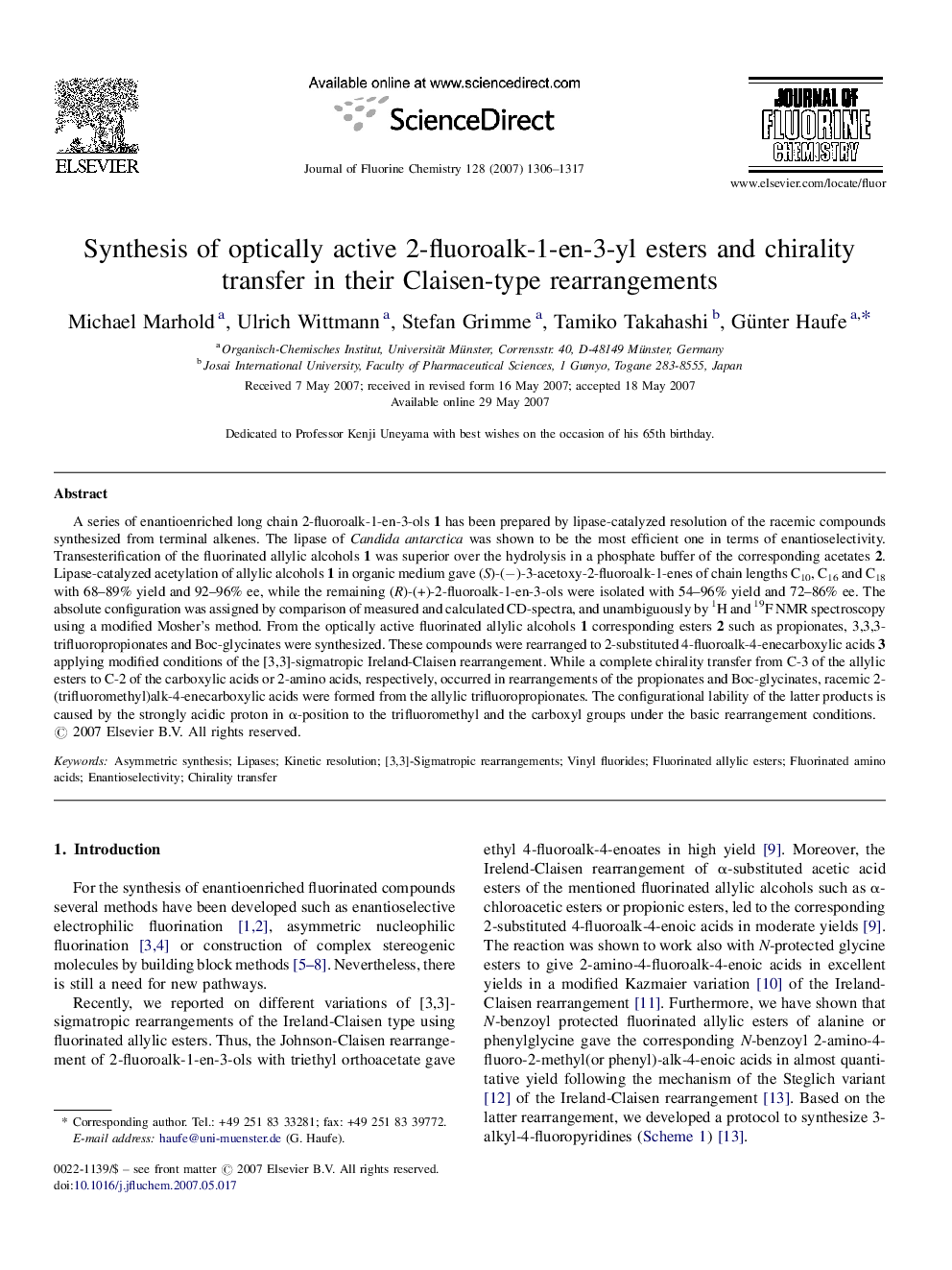| Article ID | Journal | Published Year | Pages | File Type |
|---|---|---|---|---|
| 1314824 | Journal of Fluorine Chemistry | 2007 | 12 Pages |
A series of enantioenriched long chain 2-fluoroalk-1-en-3-ols 1 has been prepared by lipase-catalyzed resolution of the racemic compounds synthesized from terminal alkenes. The lipase of Candida antarctica was shown to be the most efficient one in terms of enantioselectivity. Transesterification of the fluorinated allylic alcohols 1 was superior over the hydrolysis in a phosphate buffer of the corresponding acetates 2. Lipase-catalyzed acetylation of allylic alcohols 1 in organic medium gave (S)-(−)-3-acetoxy-2-fluoroalk-1-enes of chain lengths C10, C16 and C18 with 68–89% yield and 92–96% ee, while the remaining (R)-(+)-2-fluoroalk-1-en-3-ols were isolated with 54–96% yield and 72–86% ee. The absolute configuration was assigned by comparison of measured and calculated CD-spectra, and unambiguously by 1H and 19F NMR spectroscopy using a modified Mosher's method. From the optically active fluorinated allylic alcohols 1 corresponding esters 2 such as propionates, 3,3,3-trifluoropropionates and Boc-glycinates were synthesized. These compounds were rearranged to 2-substituted 4-fluoroalk-4-enecarboxylic acids 3 applying modified conditions of the [3,3]-sigmatropic Ireland-Claisen rearrangement. While a complete chirality transfer from C-3 of the allylic esters to C-2 of the carboxylic acids or 2-amino acids, respectively, occurred in rearrangements of the propionates and Boc-glycinates, racemic 2-(trifluoromethyl)alk-4-enecarboxylic acids were formed from the allylic trifluoropropionates. The configurational lability of the latter products is caused by the strongly acidic proton in α-position to the trifluoromethyl and the carboxyl groups under the basic rearrangement conditions.
Graphical abstractFigure optionsDownload full-size imageDownload as PowerPoint slide
